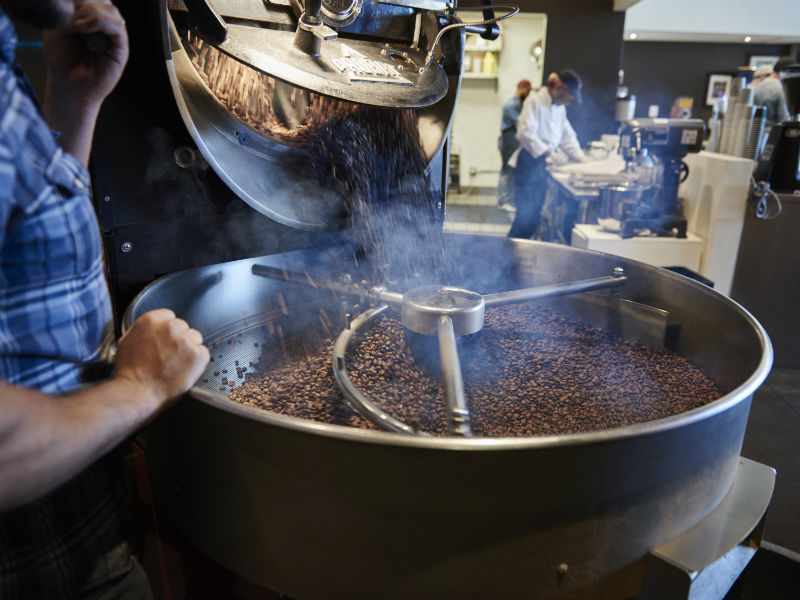Toby's Estate talk Small Batch Roasting
By Jonathan Withers, Green Coffee Buyer at Toby’s Estate Brooklyn.
Coffee roasted in small batches is a pillar of the specialty coffee industry. It’s an essential part of how we elevate our product above the classic American perception of coffee as a simple common commodity. At Toby’s Estate, we and our customers celebrate a small batch methodology. It is an artisanal, hand-crafted approach that facilitates and advances deep connections between tradesperson and material, removed from the industrial construct of mass production prioritized above quality; fostering instead a relationship with the client centered on a product made-to-order, carefully and skillfully.
Successfully delivering quality with this approach relies on the implementation of systems which are focused towards consistently achieving a high standard -- batch to batch and day to day. From the perspective of the customer, quality is only as high as our ability to fulfill every time. Among the artisanal aspects of small batch roasting, experienced craftspeople have the tools at hand to achieve these high degrees of quality; it’s only a matter of applying them towards the goal of consistency.
The operation of small batch equipment allows for the manipulation of multiple controls towards the progress and outcome of a roast: heat via gas burners, airflow via fan speed, damper position, drum speed, and chosen batch size. These variables all independently influence the roast and are essential avenues for exploration in obtaining the sweet-spot. That is the reference profile of how to best roast that coffee in production. Too many variables moving at once however, will diminish the roaster’s control over the batch. Once this ideal roasting of a coffee is established, reducing the complexity of variables is key. In most production machines, this is commonly achieved by setting all variables other than gas pressure. Then the batch is controlled solely by manipulating the heat applied to the roaster.
Having limited the variables to simplify and improve repeatability, we need points of feedback with which to monitor and react to controls and results during the roast. Temperature readings at multiple points in the roasting system are essential. These are done with a probe that measures the air exiting the drum and a probe placed awash in the beans to measure the temperature of coffee mass. Gauges on the gas supply and roaster exhaust air allow for hard measurements of the values of heat being applied (burners) and removed (airflow). Associating a reference profile to a static batch size allows these values to serve as a meaningful reference. Therefore, we can replicate the precise conditions and adjustments in future production batches. For recording, collating, and parsing all this data, many options exist to digitally log roasting data and display the information as a referable curve. By drawing the current curve over that of the reference, batches can be skillfully manipulated to be precisely replicated.
After the batch is dropped and cooled, other points to control consistency exist to ensure perfect uniformity. Measuring the weight of the roasted coffee against that of the initial green shows the moisture mass lost during roasting. This number will change as the green coffee ages throughout its lifespan, but from day to day it provides a simple metric as to how similarly the coffee was roasted. More precisely, color analyzers exist which optically meter roasted, ground coffee to give a numeric value indicating the degree to which the coffee has roasted. Cupping your roasted product is of course the most direct connection with the success of the final consistency. Multiple batches appearing together on the same table are incredibly meaningful as they can be directly compared against one another. Carefully recording and collating this sensory data allows a full picture of success as well as areas for focused improvements.
Successfully delivering quality from small batch roasting relies on the skills, talent, and experience of the operator. Yet to ensure that this artistry is maintained and guaranteed with every batch over long days and weeks, a rigorous system of variable control, monitoring metrics and tight quality control is paramount. When they catch problems, you’re glad the mistakes weren’t able to slip through the cracks.

Share
By Jonathan Withers, Green Coffee Buyer at Toby’s Estate Brooklyn.
Coffee roasted in small batches is a pillar of the specialty coffee industry. It’s an essential part of how we elevate our product above the classic American perception of coffee as a simple common commodity. At Toby’s Estate, we and our customers celebrate a small batch methodology.